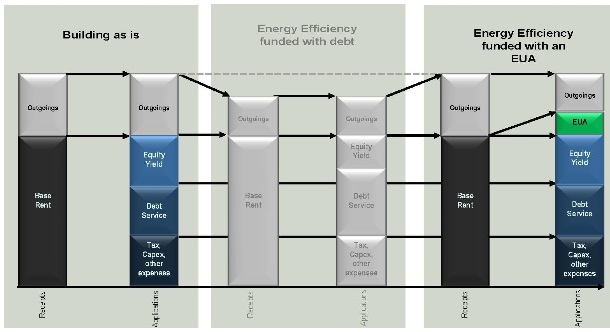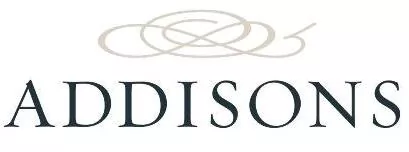In brief
- Environmental Upgrade Agreements (EUAs) offer building owners a potentially attractive way of financing projects to improve their building's 'green' credentials, with limited impact on returns.
- EUAs seek to deliver (better than) senior debt margins, long dated maturities and limited recourse.
- EUAs are set to become a more common feature of the financing landscape, with projects in the pipeline in Sydney and Melbourne.
Introduction
Environmental Upgrade Agreements (EUAs) offer building owners a new and potentially attractive way of financing projects to improve their building's 'green' credentials.
With some successful upgrades recently completed in Melbourne, and a number of EUA projects set to begin in Sydney's CBD, EUAs are emerging as a promising and economically sound option for building owners to undertake environmental upgrade works.
Now is a good time for building owners to think seriously about whether an EUA can help them.
1. What is an EUA?
An EUA is an agreement between a building owner, a finance provider, and a local Council, under which:
- the building owner agrees to retrofit the building in order to improve its energy, water or environmental efficiency, or its sustainability;
- the finance provider agrees to fund the upgrade works; and
- the Council agrees to collect an 'Environmental Upgrade Charge' (EUC) from the building owner, which the Council then passes on to the finance provider to repay the finance.
2. What kind of works can building owners carry out under an EUA?
Owners have a variety of options when it comes to upgrading their property to improve environmental efficiency. These include installing new air conditioning, lighting and heating systems, water-saving equipment and more efficient insulation.
3. Does it stack up for building owners?
Clearly, the devil's going to be in the (financial) detail. However, EUAs are designed to:
- facilitate the improvement of a building's energy efficiency, with the consequent uplift in value and rental attractiveness of the building;
- allow building owners to pass on the costs of (some or all of)
the upgrade works to tenants, so that:
- they avoid or mitigate the adverse effect on equity returns that would otherwise result from funding an environmental upgrade with ordinary debt or out of equity (illustrated in the graph below); and
- they reduce the so-called "split incentive" that can
otherwise make energy-efficiency works unattractive. Absent an EUA,
the person who derives immediate benefit from the works (ie the
tenant, through lower outgoings) is not the person who funds the
works (ie the building owner); and
EUA sustainability economics1
(Data source: Aeris Capital)
- provide building owners with access to attractive debt terms to
fund the works, principally:
- margins that are lower than senior bank debt margins;
- long dated debt maturities (10 years); and
- non-recourse security and debt that cannot be accelerated in the usual way.
4. Potential issues for building owners
In assessing whether an EUA might be appropriate, building owners should consider:
- the nature and terms of their leases to assess the extent to which on the costs of the EUA can be passed through to tenants;
- the potential drag on equity returns that may result if the costs of the EUA exceed the amount that can be passed through to tenants (but bearing in mind that this drag will almost certainly be less than under traditional debt or equity financing);
- the position and likely attitude of existing or potential senior lenders. At first glance senior lenders might be uncomfortable with an EUA because it seems to rank ahead of a first mortgage security, and – at least until EUAs become a more common feature of the financing landscape – will need comfort that the limited recourse and acceleration rights inherent in an EUA do not prejudice their security position; and
- the additional reporting obligations they will be taking on
under an EUA. These include:
- notifying the finance provider and Council when building upgrades have been completed;
- providing an annual report to the Council and to any tenants contributing towards the EUC; and
- providing tenants with costs savings estimates, and with a copy of relevant sections of the EUA if requested.
5. Conclusion
With EUAs likely to become an increasingly popular method of financing environmental retrofits, building owners should consider whether the EUA scheme can benefit them. If you would like to discuss the scheme in more detail, please contact us.
Footnote
1 Assumes 100% pass-through of EUC to tenants.
The content of this article is intended to provide a general guide to the subject matter. Specialist advice should be sought about your specific circumstances.

